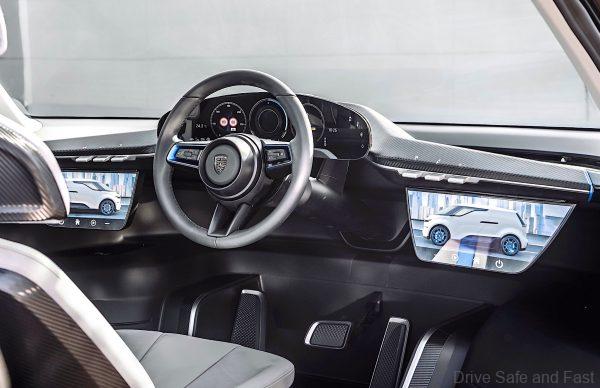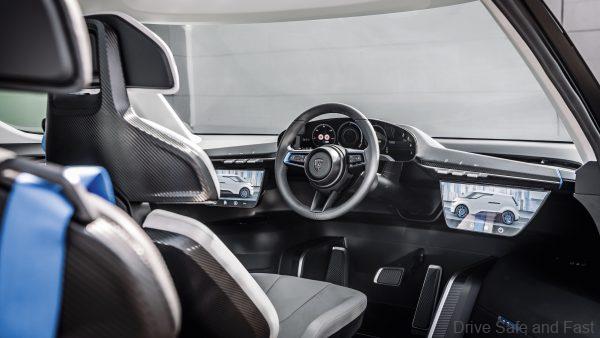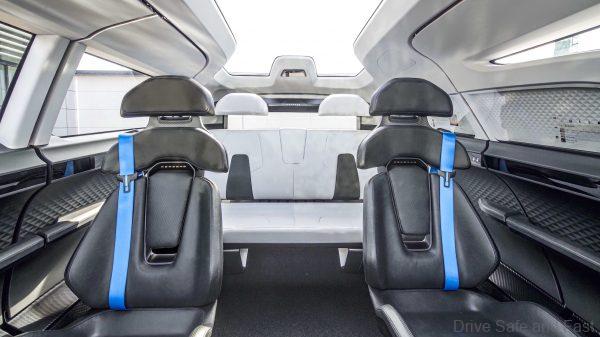Porsche MPV That Never Went Into Production
Many years ago Porsche gambled with a SUV and it was a success, maybe it is time for a Porsche MPV.
Porsche is a known automaker that has everything from sports cars to SUVs, with a few sedans and station wagons included in the mix to ensure its regular customers see no reason to go another brand for its automotive needs.
Back in 2018 however, this Stuggart based marque decided that it somehow wanted to build an MPV to complete its showroom line up offering. And thus was born the Vision Renndienst, which was first revealed as part of 15 concept cars that were made public by the German automaker through its Porsche Unseen book launched late last year.
Porsche looked at the Vision Renndienst’s powertrain specs are left it being fully-electric. Other details like the interior material choices and tech toys featured within this Porsche MPV are also still up in the air at the present moment, as is whether or not it will ever see the light of day in production form too.
If and when the Vision Renndienst goes into production, you can be assured that it will still be a true driver’s brand even as other lose a little of the driving appeal.

PRESS RELEASE: To shape the future, Porsche designers cross boundaries. They take the best from traditions and origins—the brand essence, the values that have made the company successful. At the same time, they boldly add something new. To do so, they study people and their habits in general and Porsche drivers in particular.
“In the past, we used to type our destination into the navigation system before a journey. Today, we prepare the route on our smartphones while sitting on the sofa, and then send it to the car.” For Ivo van Hulten, director of user experience design (UX), the possible has long been taken for granted.

At the Weissach Development Center, UX stands for everything you can experience in and with a Porsche. It’s about a desire for convenience, flexibility, and timeliness—condensed into a brand experience.
Together with chief designer Michael Mauer and Markus Auerbach, head of interior design, van Hulten experiments every day with what will meet these needs in a few years’ time. The designers keep their minds fresh with the “first principle thinking” method.

In doing so, they move away from familiar analogies and break hypotheses down into their smallest components. They focus not on familiar forms but on functions that might be of interest in the future. They ask themselves what a Porsche could be and what it could not be. This process provides answers to questions that no one has asked before.
In the book Porsche Unseen, the sports-car manufacturer recently published fifteen previously secret design studies. Among them is the vision Renndienst. In its name, the van, which can carry up to six people, bears a reminiscence of the VW racing service van that once served the factory racing team as a service vehicle.
On the outside, it’s futuristic and edgeless—on the inside, it’s a modular travel cabin.

Interior of the future
“We thought about how we could still give a distinctly Porsche flair to a passenger compartment that is so far removed from the classic sports-car interior. And how autonomous driving could be designed,” Mauer explains. The second aspect is certainly worth discussing. After all, sports cars are a symbol of self-determination.
“We don’t assume that our customers want to give up using a steering wheel,” says Mauer. But in order to be able to think freely about the future, boundaries must be crossed when carrying out these finger exercises. This, he says, is how the centered driver position of the Renndienst came about.
“When I want to drive, I have more cockpit feeling than in any other car. And when I don’t, the driver’s seat can be rotated 180 degrees—with one swivel, it turns to face the other passengers. We worked on materializing these basic ideas for about a year,” the chief designer explains.
The overall UX, when it comes to interior design, is dedicated to the digital lifestyle and the relationship between driver, passengers, and vehicle. “In the Taycan, we have shown how much we think ahead,” says forty-three-year-old van Hulten. “Now we were looking at a possible next overall innovation. For this, we thought and worked from the inside out.”

The side windows are designed asymmetrically. “One side is closed; passengers can retreat there,” explains interior design chief Auerbach. “The other side enjoys a large window bank for an unobstructed view outside.
When we close the doors, the interior feels like a protective capsule.” A feeling of security and comfort dominates the modular interior. The passengers in the first row sit offset to the right and left in ergonomically shaped bucket seats. They can enjoy an unobstructed view of the road ahead and of their own dashboard screens.
The rear seat headrests are installed in a floating position, which allows a clear view through the rear window. The luxury of adaptable space is made possible by the powertrain: fully electric and hidden in the underbody.

UX as a success factor
Ivo van Hulten deals with the clientele of the future—the smartphone generation. “In the past, the hunger for something new was satisfied with the purchase of the product. Today, many young people are no longer just fascinated by the aesthetics of a product, but by the opportunities it offers them.”
The aesthetics of the interior therefore depend on many more factors than just shapes and materials. “The questions are: Is the interior modular enough to adapt to changing circumstances even a few years after purchase?
Will I be able to run updates remotely and around the clock?” He is confident of finding answers in the form of a new aesthetic: “We are building on an impressive brand history with the UX department—and are boldly looking far into the future.”
His colleague Markus Auerbach adds: “A digital journey can open a gateway to a universe for us, but it can never replace the physical experience. A car is a space that moves whether I’m driving it myself or not.
The seats in this van have been designed for movement; they hold and support the body.” He points from the sports seat in the second row to the back bench seat, which resembles a lounge.
“The bench seat allows a different sitting angle due to its curved sides—we can turn towards each other. It is a particularly communicative area that invites relaxation, offering alternative seating positions for talking, working, and relaxing.”
For the fifty-seven-year-old, the materials of the future include renewable resources such as wood, reinterpreted and combined with metals or sustainable plastics. Wood was once banished from vehicles, but could soon make a comeback.

Auerbach also relies on what are known as smart materials, which can do something special—for example, respond to external factors and light up without being directly illuminated. Or materials that repeatedly change their shapes to perfectly fit the ergonomics of the occupants.
A sense of space with a soul
The visions on which the specialist departments in Weissach work together are complex because they design spaces where people sit. “Seen from the outside, a Porsche is a sculpture, a work of art. The interior adds another dimension.
Cars with an unsatisfactory interior do not survive for long, because no emotional connection can be built with them,” summarizes Auerbach. For the interior designer, it is clear that there will still be switches and buttons in the future:
“The balance between analogue and digital control panels is shifting. Nevertheless, haptic buttons in the vehicle cockpit are perfect because you don’t have to take your eyes off the road. However, if one day, as the driver, I have much less to do, that may change too. But we cannot solve everything through optics, because otherwise we lack dimensions.”
In the next step, van Hulten wants the Renndienst to gain a soul. He remembers the American TV series Knight Rider, which he enjoyed watching as a child.
“K.I.T.T., the talking car, fascinated me. The strong team of the protagonist and his vehicle really captured my imagination. I connected with the car because it had a soul.” Referring to the study, he asks the question: “What kind of daily interactions do we plan—in thirty years, will we call our car and then it will come around and pick us up?”

From this grand vision of the day after tomorrow, the design team is now moving backwards in time to get the specific answer for tomorrow. With the best of the brand DNA: its soul.
Research and Text by Joshua Chin














